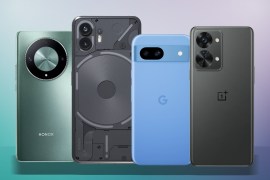Vivo V40 Pro review: still a selfie star
Zeiss optics elevate this sensibly-priced mid-ranger
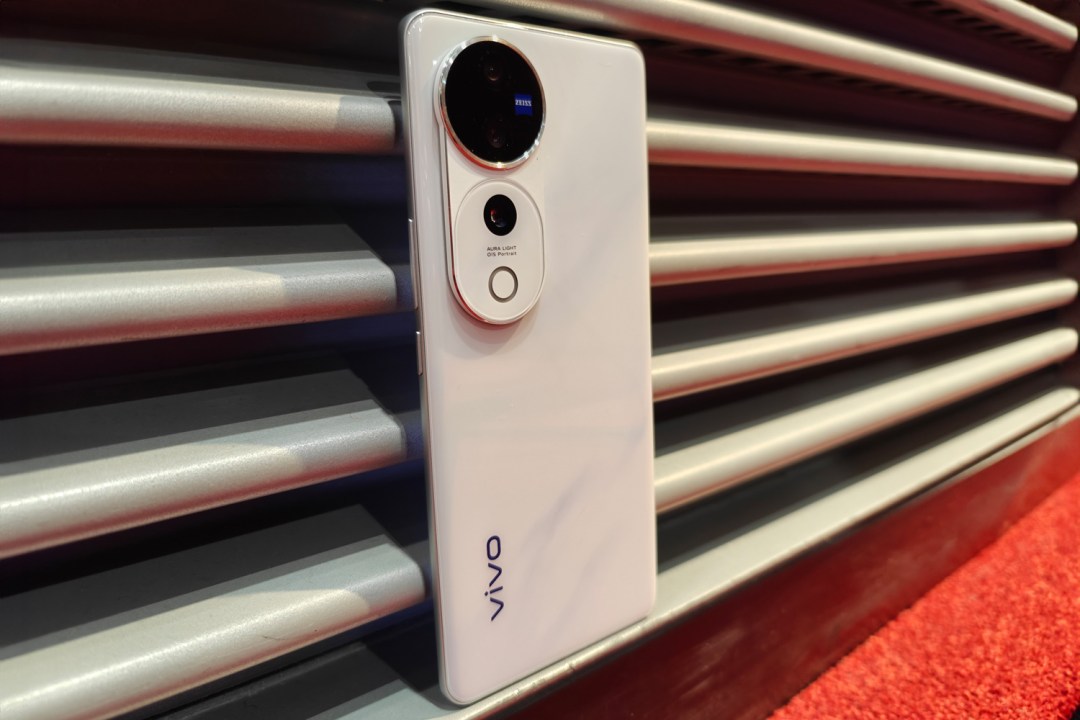
Stuff Verdict
A ‘plays it safe’ update for what was already a brilliantly well-rounded mid-ranger that excels on photography. The Vivo V40 Pro is a real contender in the few countries it’s readily available.
Pros
- High quality selfies and very capable rear camera trio
- Near-flagship grade performance and long-lasting battery
- Slim build and clean looks
Cons
- Plastic frame and curved-edge glass a bit behind the times
- Funtouch still a bloated Android UI
- Limited global availabiliy
Introduction
Vivo’s sensibly-priced V series smartphones have gotten better and better with each new generation. Since inheriting Zeiss optics and image processing from the firm’s flagship X series – which are hands down some of the best handsets for photography in 2024 – they’ve been some of the best bang-per-buck camera phones going. Or they have if you live in one of the few countries Vivo officially operates in, anyway.
The V40 Pro also stands out with a huge capacity battery and one of the fastest MediaTek chipsets you’ll find on any phone, which should help it close the gap to Snapdragon-powered rivals that cost considerably more cash. However, it hasn’t been all that long since the Vivo V30 Pro arrived. Have things really improved enough in six months to justify the update?
How we test smartphones
Every phone reviewed on Stuff is used as our main device throughout the testing process. We use industry standard benchmarks and tests, as well as our own years of experience, to judge general performance, battery life, display, sound and camera image quality. Manufacturers have no visibility on reviews before they appear online, and we never accept payment to feature products.
Find out more about how we test and rate products.
Design & build: plastic pearl

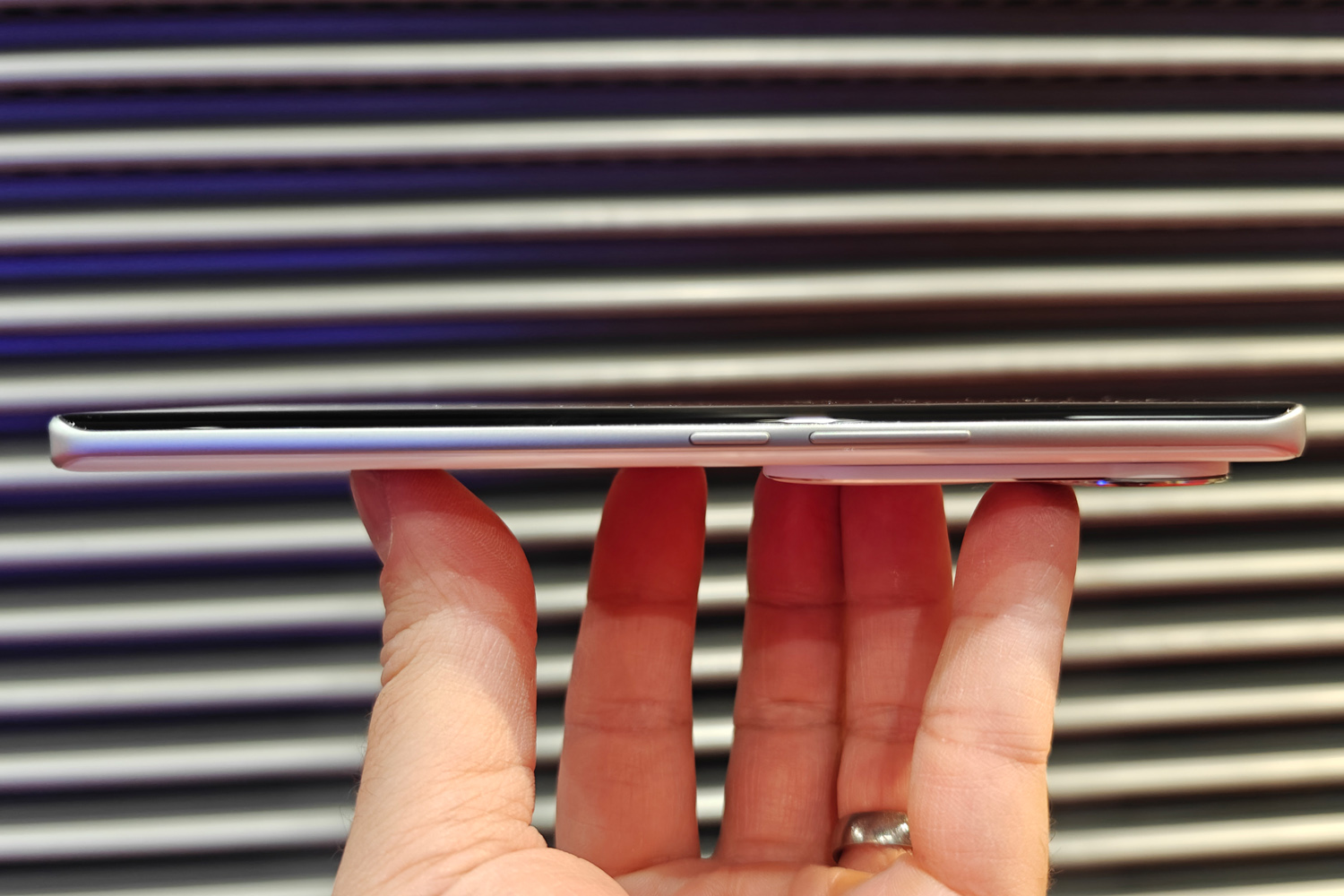

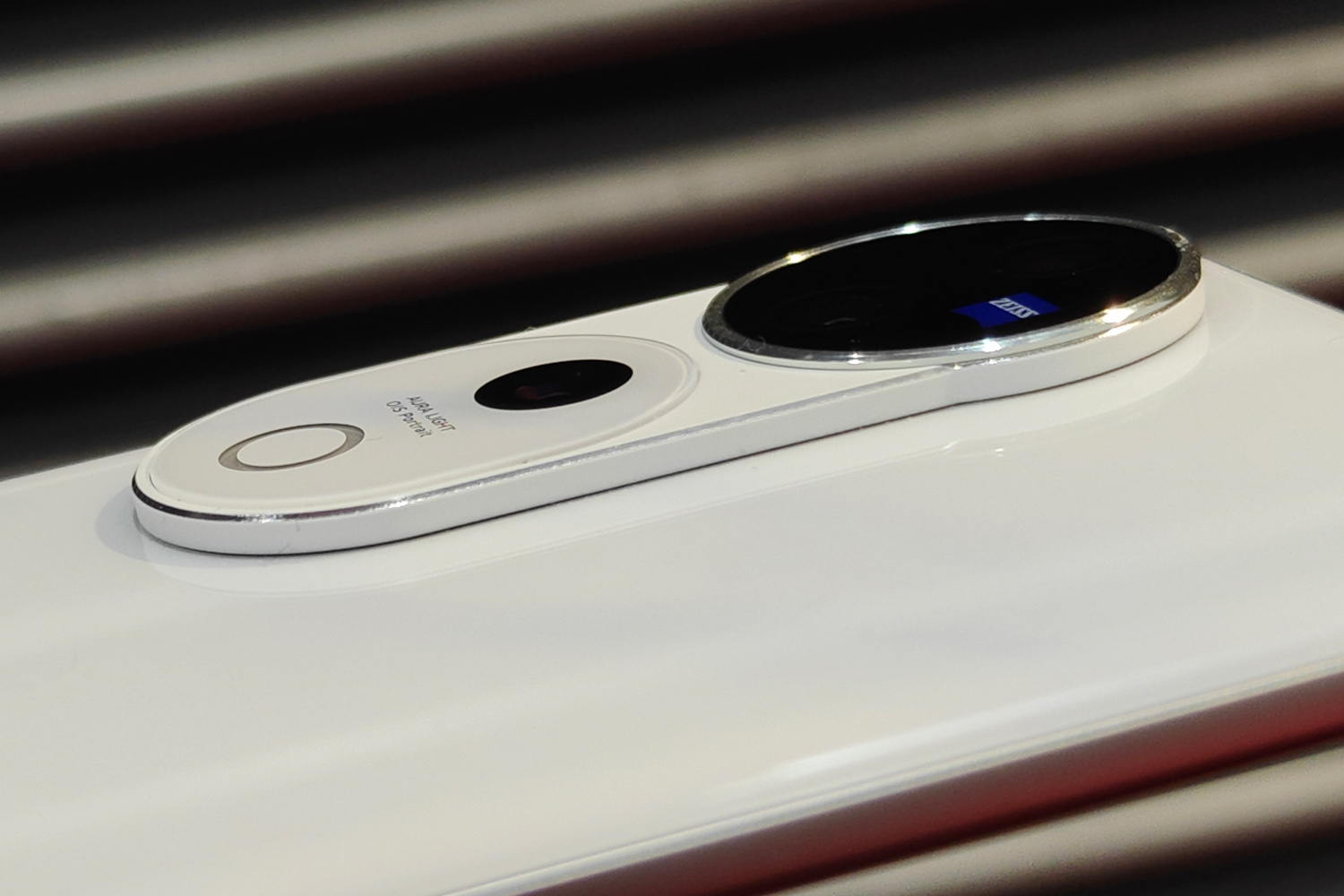

Some fresh colour options and a redesigned rear camera bump are really all that sets the Vivo V40 Pro apart from the outgoing V30 Pro. Overall dimensions are almost a perfect match, and the way the front and rear glass curve into the central frame look very familiar. Those cambers are either a welcome break from the current flagship trend for straight sided phones, or make the V40 Pro feel a bit behind the times, depending on your point of view.
Vivo has shrunk its signature Aura Light, so it no longer dominates the rear of the phone like previous years. The ring-style fill flash still gets plenty bright, though, and has adjustable colour temperature to take greater control over any low-light photos, but it’s not as eye-catching as the outgoing phone’s squircle-style LED.
I’ve not seen the Meteor Blue or Stellar Silver versions in person, but quite liked the distinctive marble effect on my Moonlight White review unit. A fingerprint resistant finish helped the phone stay spangly and fresh-looking throughout my testing, though the resulting glossy sheen does make the rear glass look and feel a lot like plastic. Vivo has also stuck with a polycarbonate frame here, at a time when rivals are starting to bring metal back to their mid-rangers.
The V40 Pro weighs a little more than last year’s effort (192g vs the V30 Pro’s 188g), but I can’t say I noticed any difference. It’s a small sacrifice when you’re getting a considerable boost to battery capacity here. This is still a svelte phone, at a mere 7.6mm excluding the camera module, so slipped in and out of my pocket with zero drama. Top marks to Vivo for the IP68 rating, too – it’s a big step up from the V30 Pro’s IP54 dust and water resistance.
I had no issues with the placement of the in-display fingerprint sensor, either. It was easy to reach while holding the phone one-handed, and was quick to detect my digits. Facial recognition is also on board, but only for skipping the lock screen – it’s not secure enough for banking biometrics.
Screen & sound: curved and colourful


A quick look at the spec sheet suggests the V40 Pro’s 6.67in screen isn’t much of an upgrade over the outgoing model. It’s the dual stereo speakers that are the bigger departure, and a welcome change from the V30 Pro’s mono setup. They’re not the loudest I’ve heard from a phone, with no real bass presence to speak of and an overly aggressive high end, but they’re still a better fit for watching videos or playing games in landscape orientation.
The most noticeable display change is to maximum brightness. The V40 Pro now maxes out at a fantastic 4500 nits peak, which is almost twice as much as its predecessor. It really does make a big difference to daylight viewing, shining clearly even under strong sunshine, and gives HDR videos some serious oomph. This isn’t at the expense of shadow detail, either.
With a 2800×1260 resolution, the AMOLED panel looks suitably sharp from arms’ length, and holds up well to closer inspection. The adaptive refresh rate lets you force 120Hz on all the time if you prefer a consistently smoother experience; I did, and didn’t notice a dramatic downturn in battery life.
Colours are as vivid as I’d expect from an OLED, with a well-balanced colour temperature right out of the box. There’s plenty of scope for customisation, with three different colour modes, three temperature presets and a full colour wheel for fine-grain control.
I didn’t find the V40 Pro’s curved screen edges at all distracting, but I know the way they create reflections doesn’t go down well with everyone. Vivo’s very cheap plastic screen protector definitely lets the side down, though; it scratched unbelievably easily, from a force other phones with pre-fitted protectors simply shrugged off.
Cameras: Zeiss as nice

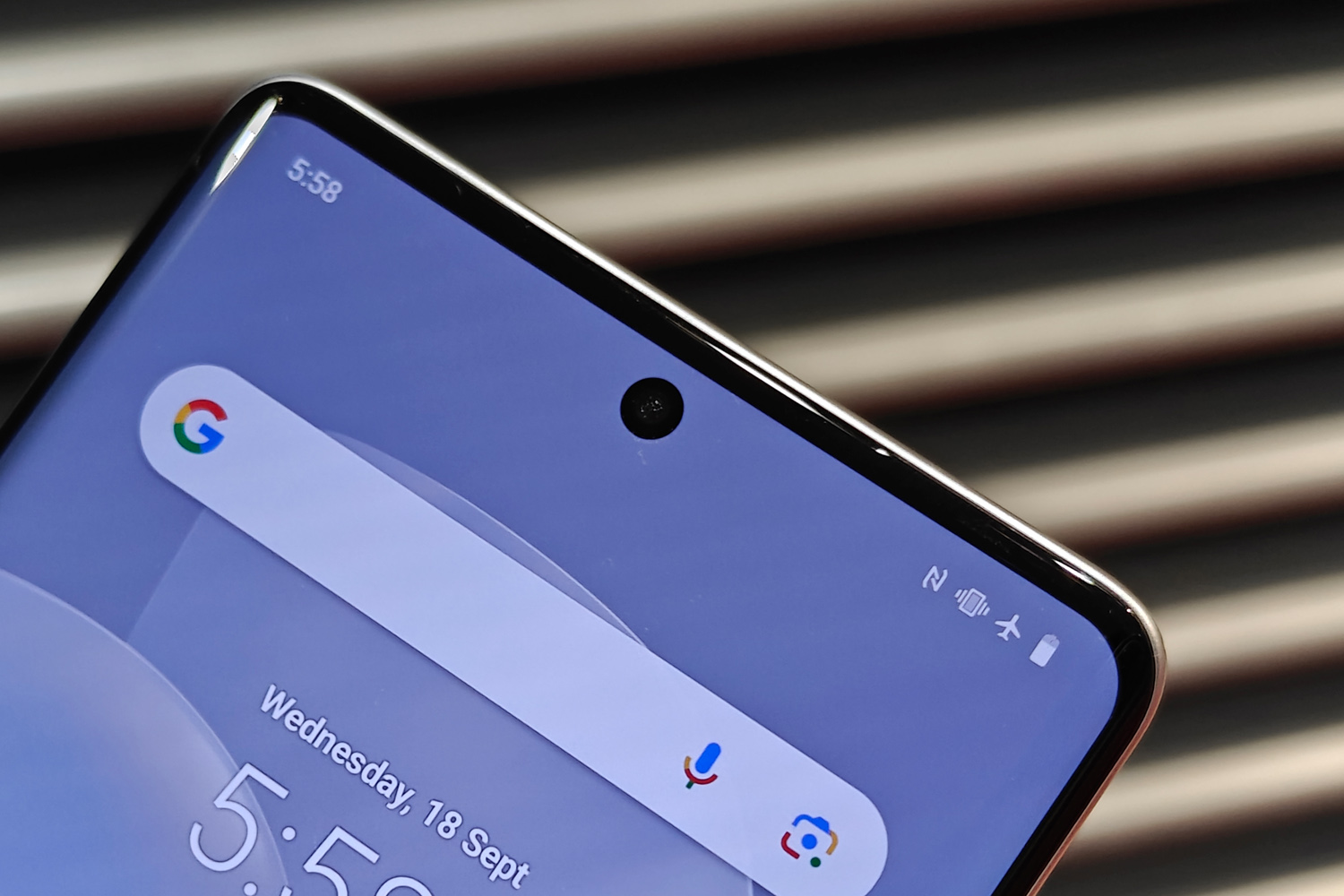
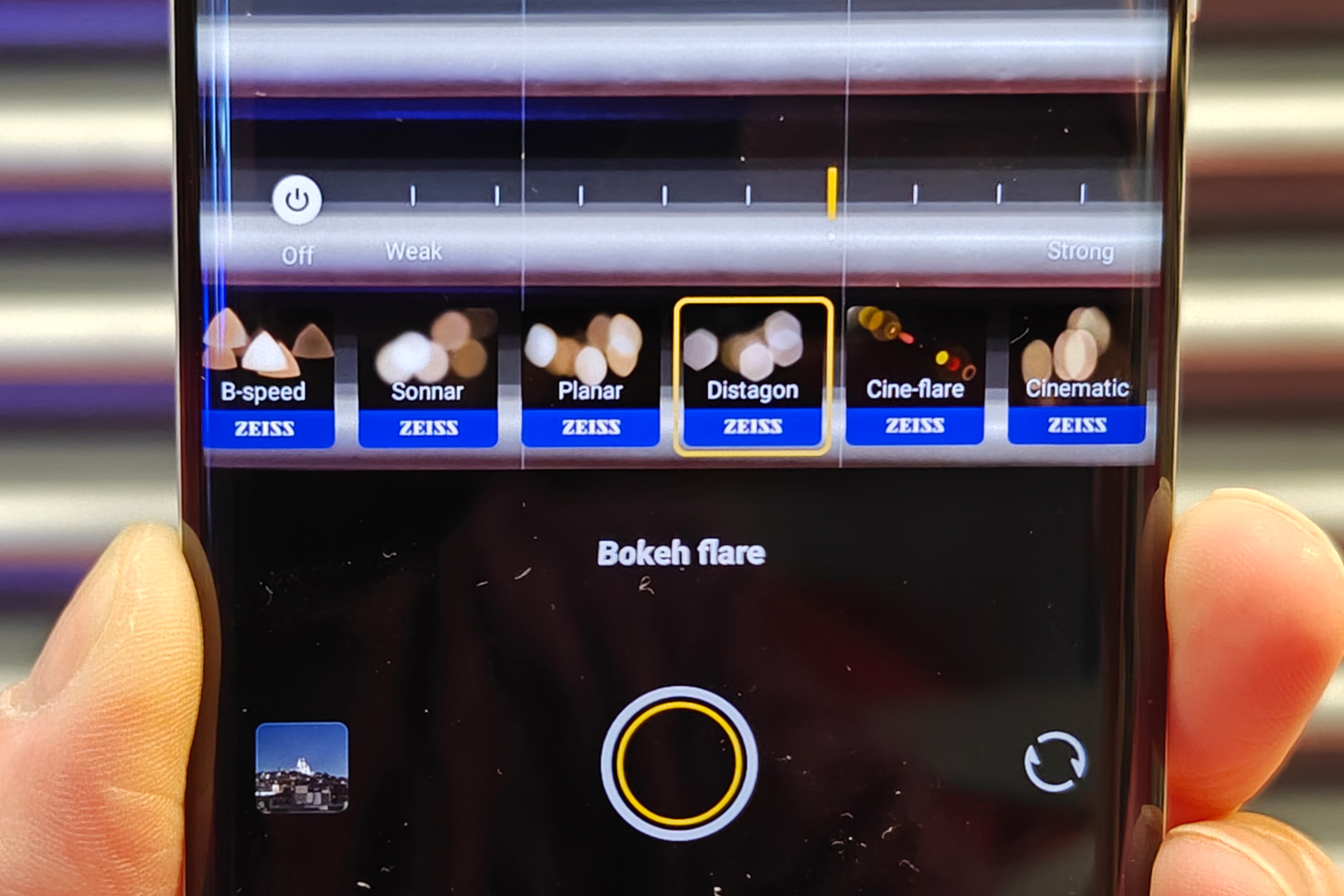
Pixel count isn’t everything, but higher numbers across the board are a good sign a smartphone hasn’t skimped on any of its cameras. The Vivo V40 Pro is off to a great start, then, with four 50MP snappers. They’ve all got autofocus, which is something seldom seen on selfie cams and still unusual for ultrawides, at least at this price. It gives the latter macro focusing abilities that let the Aura Light shine for more than just portraits; I’ve taken some truly Instagram-worthy shots of food with this phone.
While Vivo has upgraded the main camera to a newer Sony sensor, there’s not an awful lot to separate it from the V30 Pro. Which is no bad thing, as that phone punched above its weight with impressive amounts of detail and on-point exposure. You still get Zeiss glass for all three rear cameras, which is meant to have less light reflectivity than rival phones, though there was very little in it when side-by-side in direct sunlight with a pricier Google Pixel 9 Pro XL.
Photos are punchier than anything wearing a Pixel badge when using the default Vivid colour mode; the Zeiss natural tones things down a bit and stays more true-to-life, if you like that sort of thing. Regardless of mode it does a fantastic job with shadow detail and darker areas. Brighter parts of scenes could sometimes lean into overexposure. My shots were slightly warm across the board, but it was more noticeable with indoor scenes.


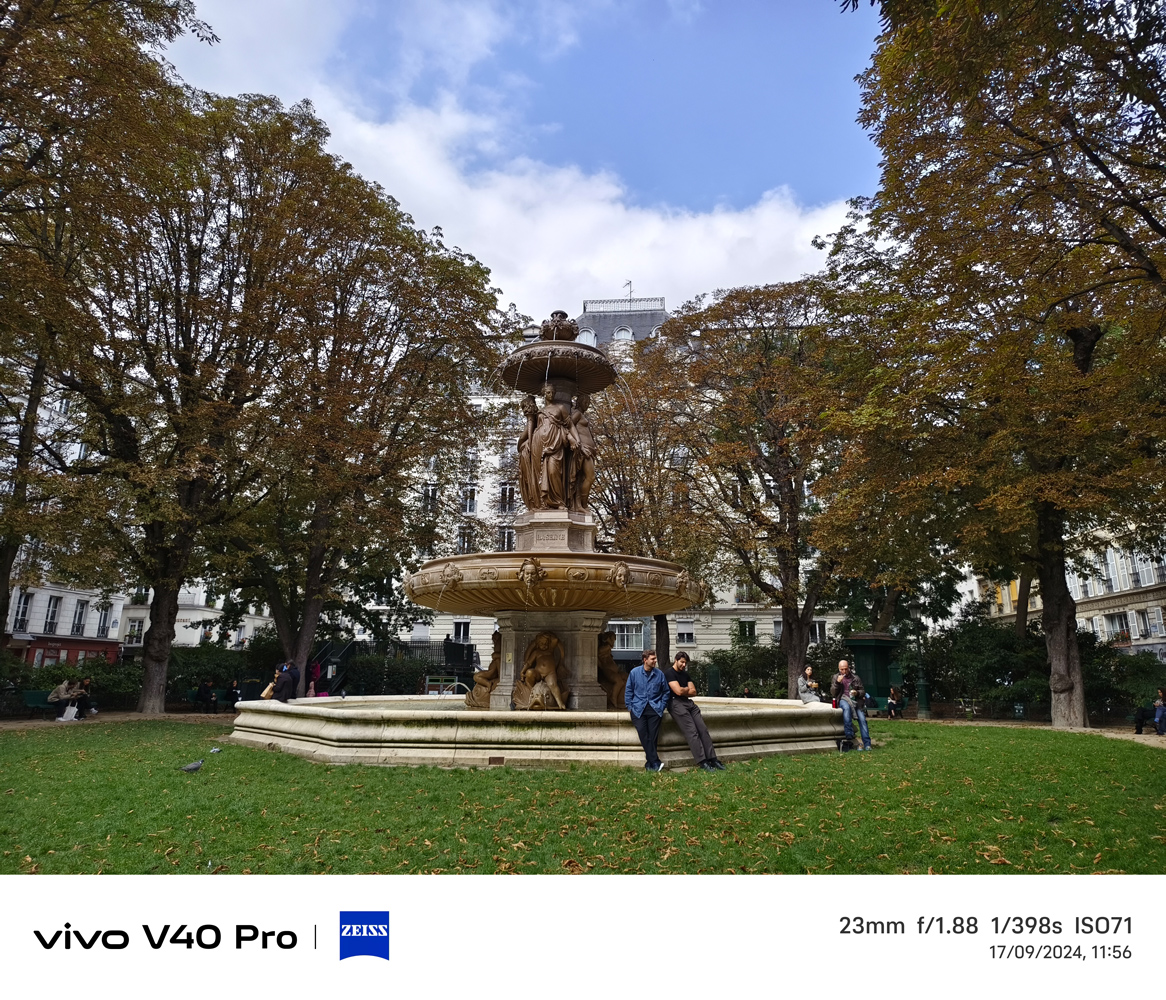






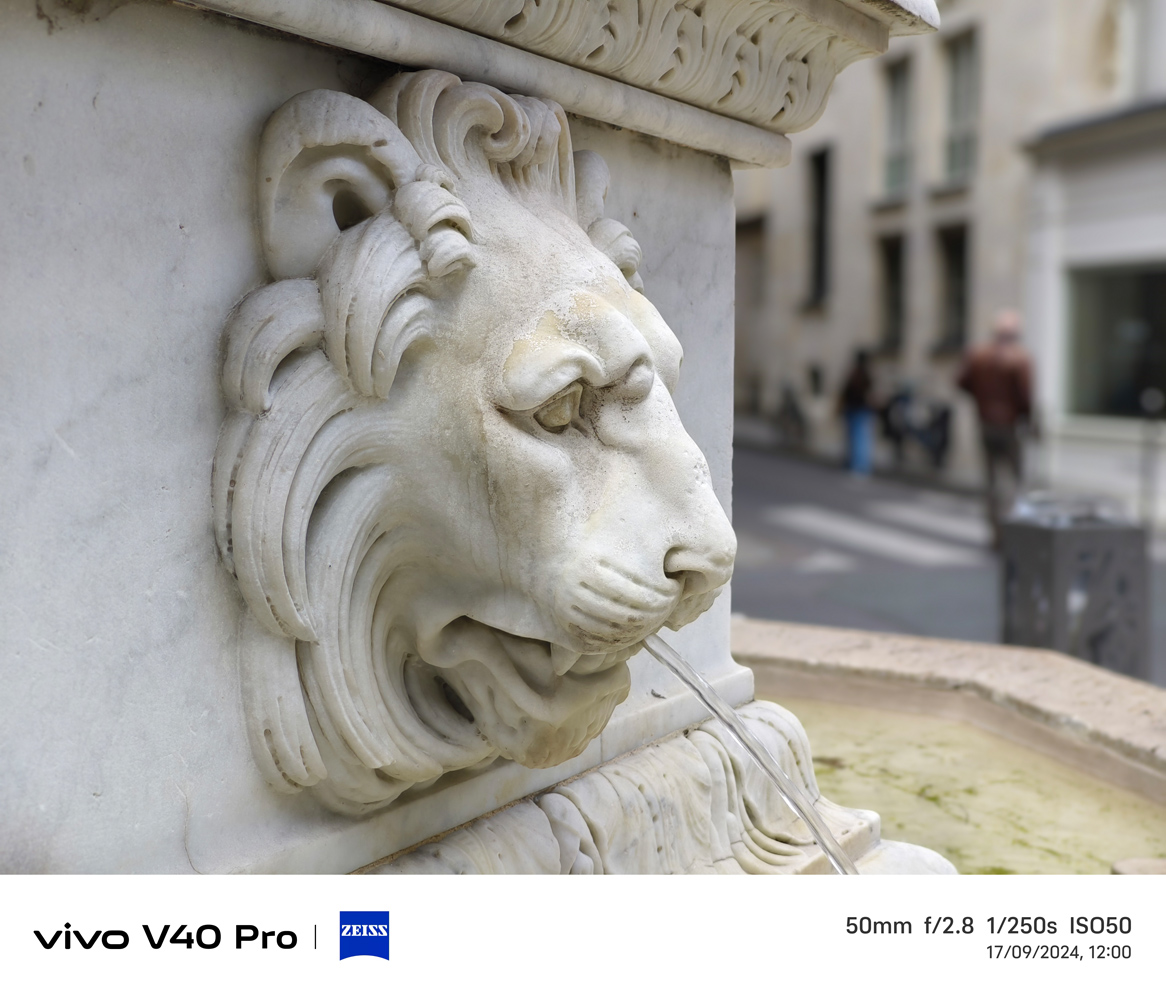


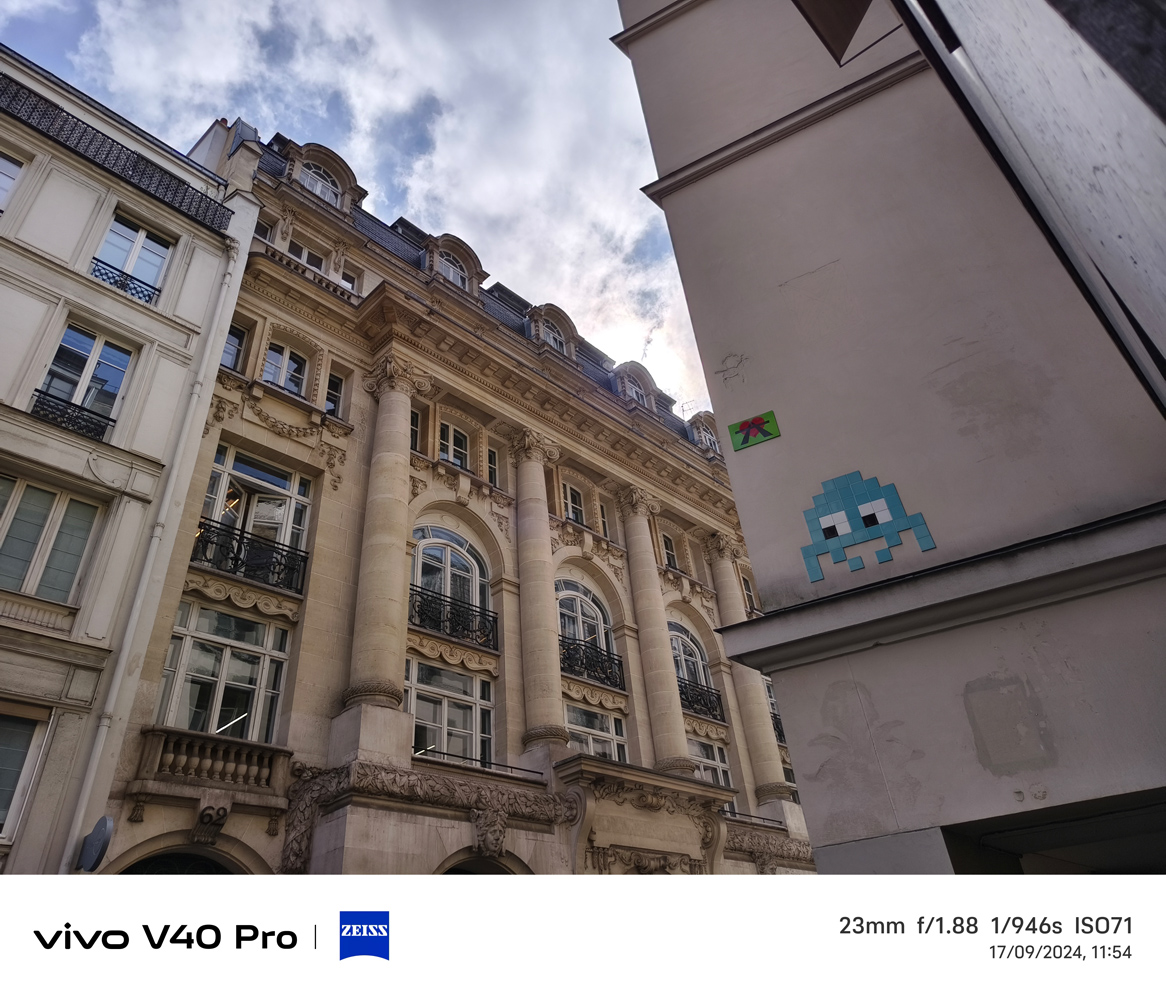

The ultrawide doesn’t preserve as much detail as the other two lenses, but it’s a step up from rivals that rely on 12MP (or lower) sensors.
Portraits are the real winner, with a bunch of Zeiss-approved bokeh effects and impressively accurate edge detection, even with finer and loose hairs. The 2x zoom lens gets usefully closer to your subjects, and image processing is essentially on par with the lead camera. I thought there was a small amount of skin smoothing going on, though, even with beauty modes switched off.



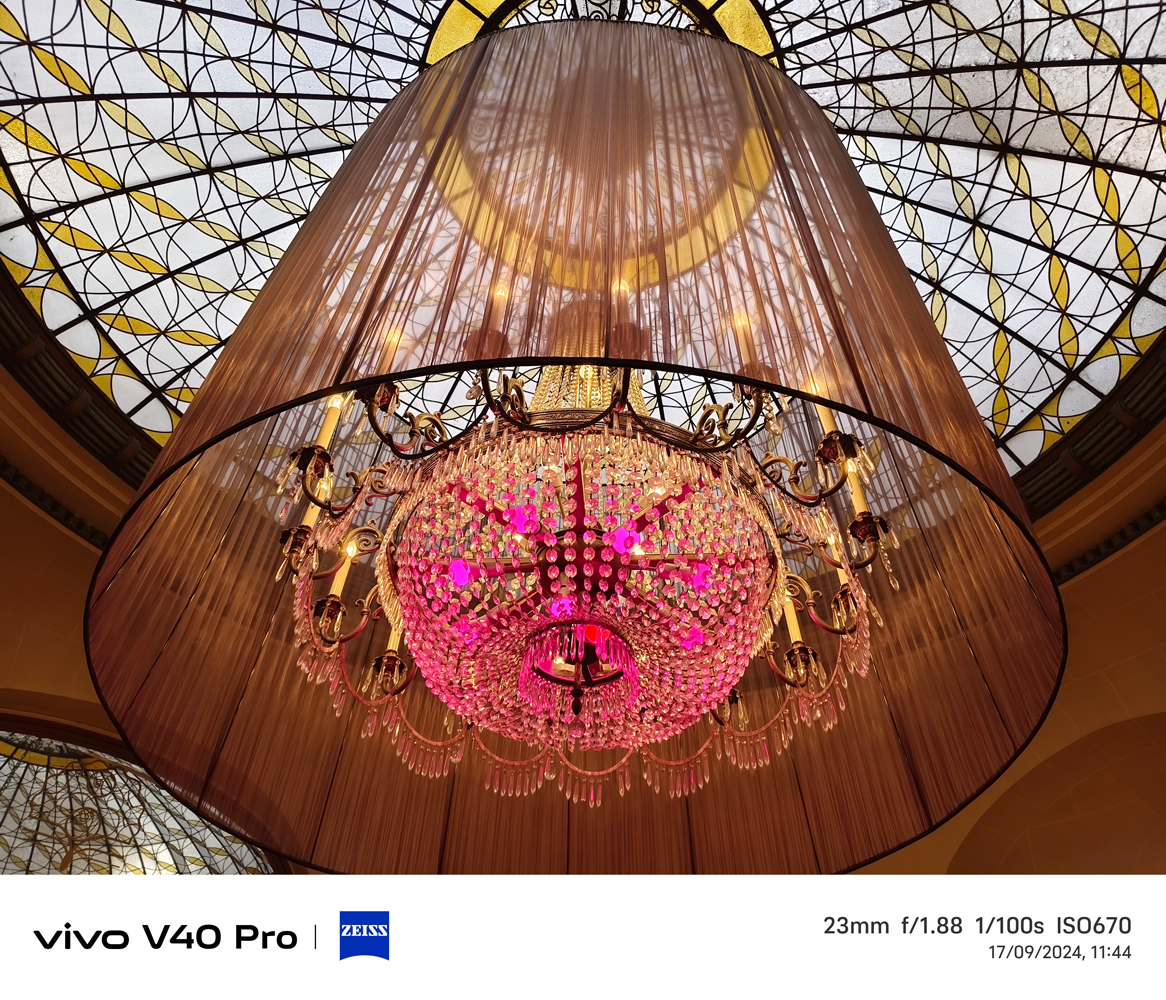
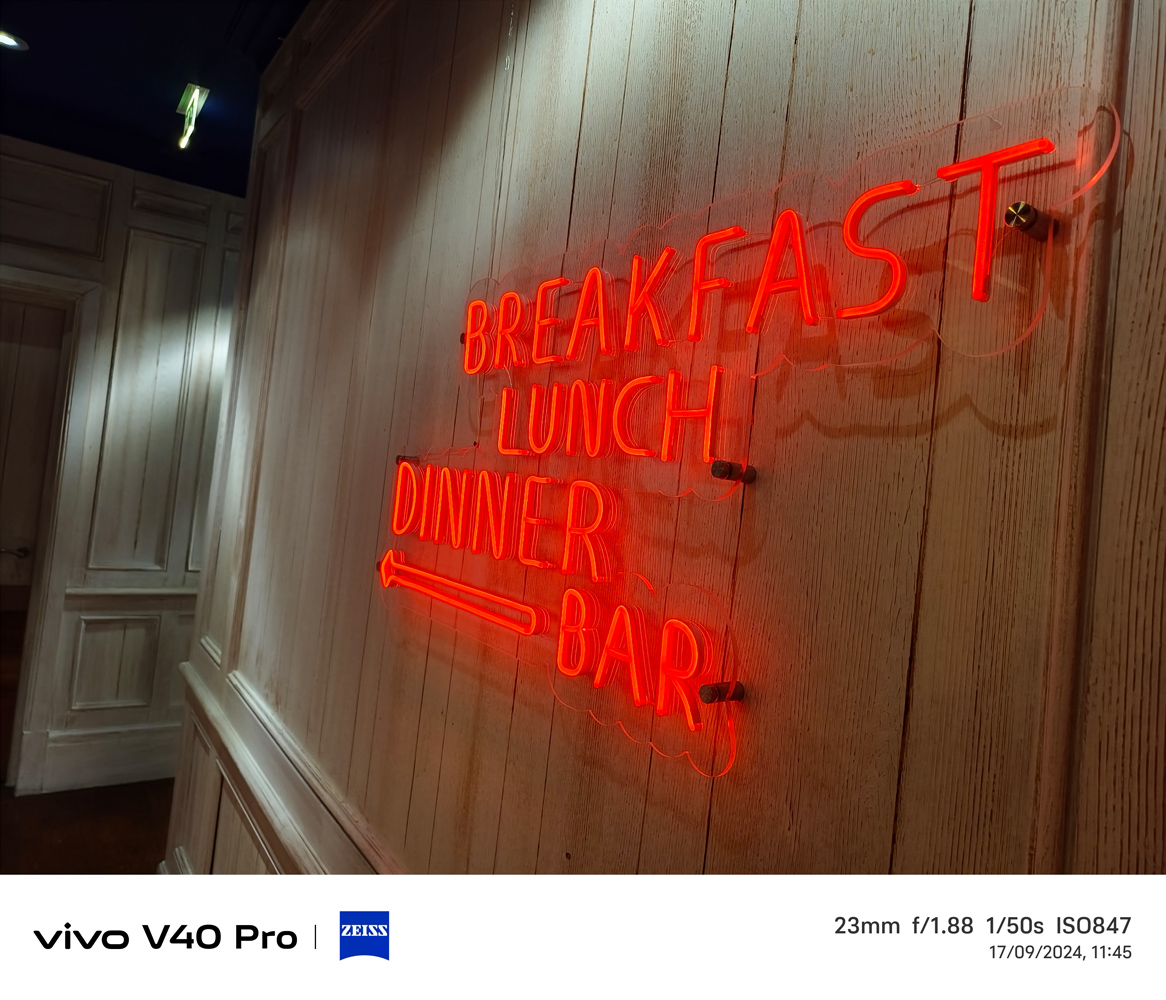
Sensor cropping adds a 4x toggle in the camera app that’s basically lossless during daylight hours, and great for getting closer to far away subjects. Things take a dive if you zoom further, though, and zoomed pics aren’t nearly as convincing in the darkest of night scenes. Low-light snaps from the main camera have impact close to – or better than, in some instances – the Pixel 8a, so this phone is punching above its weight, though it’s left behind by pricier flagships for night photography.

The selfie camera is also one of the best in its class. Each pixel-binned snap is bursting with detail, skin tones are captured convincingly. I do wish Vivo wouldn’t leave its skin-smoothing beauty mode on by default, though I appreciate some of its key markets still prefer it this way.
Software experience: a touch to much



I’ve tried a handful of Vivo phones this year, and all of ’em have been guilty of stuffing their home screens with bloatware. This isn’t as deal-breaker in many of Vivo’s target markets, but to me it cheapens the experience versus Western alternatives that are a little less heavy-handed on the pre-installed apps. If you’re all-in on Google, you’ll also hate the way Vivo’s app store constantly tries to make itself the default and bombards you with push notifications.
Thankfully most of them can be silenced or stripped out completely, leaving a very customisable take on Android 14 that’s not too far removed from the stock experience. It’ll take a few days before you’ve worked out which apps want to impose themselves on your notification tray, though.
What you won’t find here is an abundance of AI-infused apps or features. The V40 Pro runs Google Assistant out of the box, rather than Gemini, and its sound recorder won’t offer to transcribe or summarise your audio clips. There’s an AI-assisted eraser tool built into the photo gallery, but that’s about it. If you’ve yet to be swayed by artificial intelligence, this phone might be a breath of fresh air compared to the latest crop of Galaxy and Pixel phones.
I appreciate Vivo committing to three Android generation updates and four years of security patches, which is a year more than its previous mid-range efforts. It still falls short of the seven year standard set set by Google and Samsung, though.
Performance & battery life: speed demon


It’s not MediaTek’s most potent silicon any more, but the Dimensity 9200+ powering the Vivo V40 Pro is still a flagship-grade chip that brings a serious step up in gaming performance compared to the previous generation. On my top-tier review unit it’s paired with 12GB of RAM and 512GB of on-board storage; entry-level versions with 256GB of storage make do with 8GB.
Synthetic benchmarks show this phone comfortably has the edge over the OnePlus Nord 4 and Google Pixel 8a, and is miles ahead of the Samsung Galaxy A55. In some cases it was trading blows with the far pricier Exynos-powered Galaxy S24. That translated to a wonderfully smooth real-world experience in Android, with apps opening in a jiffy and quick swapping between multiple open apps never causing any stutters.
This applies to gaming, too – something MediaTek has traditionally had to settle for second place with. Frame rates were consistently higher than all three rivals mentioned above, and the most demanding titles in my Play Store library were playable at their highest detail settings. The phone did get rather toasty after an extended play session, though; that didn’t harm performance in my testing, but it’ll be something to keep in mind if you live somewhere with higher ambient temperatures than the UK.
Vivo rarely skimps on battery capacity, but has gone above and beyond for the V40 Pro. You get a whopping 5500mAh cell here, despite the phone’s impressively slim dimensions, which puts some flagships to shame. Some sensible power management (which happily isn’t keen to instantly kill your recent apps the moment you head back to the home screen) meant I could last two days per charge with no effort at all. When I worked from home all day, I was still north of 50% after a full 24 hours.
5G, gaming and recording videos all take their toll, but making it through a full day away from the mains shouldn’t be any sort of challenge. 80W wired charging means only having to wait an hour for an empty-to-full recharge, while a 50% top-up takes just 25 minutes. Vivo still includes a plug in the box, too. You don’t get wireless charging here, which is becoming more common at the mid-range.
Vivo V40 Pro verdict

The Vivo V40 Pro brings modest updates over its predecessor, but does so in all the right places. The faster chipset keeps pace with newer rivals, the bigger battery lasts for ages, and the stereo speakers are much better sounding. This phone is still a selfie supremo, and takes a great low-light snap. Other phones take the lead on colour accuracy, but if you like your shots vibrant or dramatic (depending on the Leica mode) you’ll be very happy with one of these in your pocket.
I’d still like Vivo to tone down the pre-installed bloat, and the polycarbonate build is beginning to look a bit basic compared to mid-rangers that use metal frames. Gamers will also want something that doesn’t get quite so hot under the collar.
Availability remains the Achilles’ heel, though. There’s not quite enough here that I’d suggest going to the effort of importing one – but if you live in India or the few other countries outside of China Vivo sells in, then definitely put it on your affordable phone shortlist.
Stuff Says…
A ‘plays it safe’ update for what was already a brilliantly well-rounded mid-ranger that excels on photography. The Vivo V40 Pro is a real contender in the few countries it’s readily available.
Pros
High quality selfies and very capable rear camera trio
Near-flagship grade performance and long-lasting battery
Slim build and clean looks
Cons
Plastic frame and curved-edge glass a bit behind the times
Funtouch still a bloated Android UI
Limited global availabiliy
Vivo V40 Pro technical specifications
| Screen | 6.78in 2800×1260 AMOLED w/ 120Hz |
| CPU | MediaTek Dimensity 9200+ |
| Memory | 8/12GB RAM |
| Cameras | 50MP, f/1.9 main w/ PDAF, OIS + 50MP, f/1.9 telephoto w/ PDAF, OIS, 2x optical zoom + 50MP, f/2.0 ultrawide w/ autofocus rear 50MP, f/2.0 front w/ autofocus |
| Storage | 256/512GB |
| Operating system | Android 14 w/ Funtouch 14 |
| Battery | 5500mAh w/ 80W wired charging |
| Dimensions | 164x75x7.6mm, 192g |


